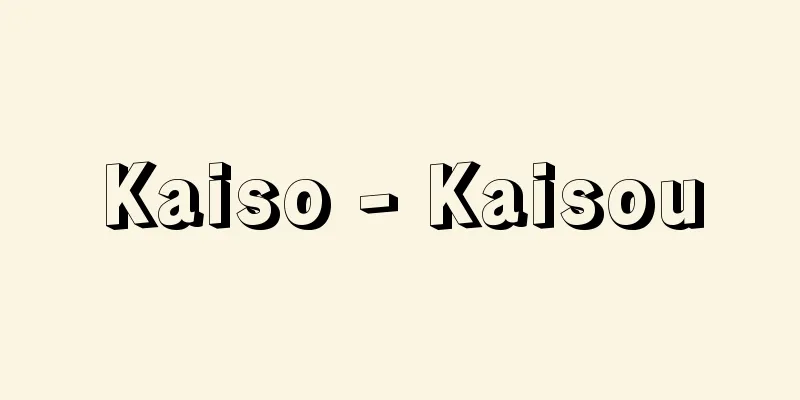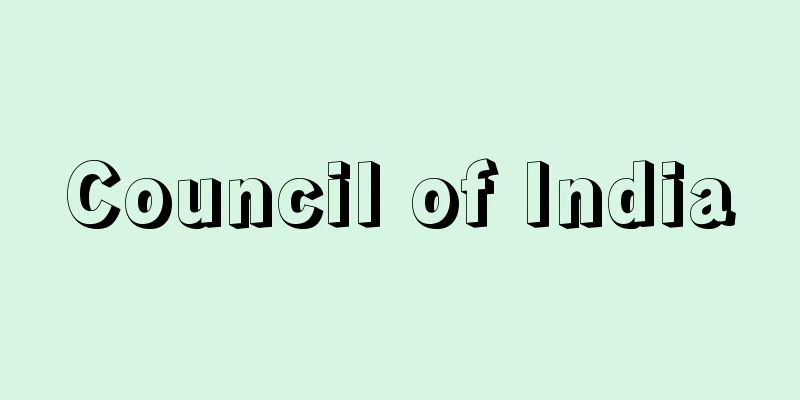Florence - Firenze (English spelling)

|
Florence is the capital of the Tuscany region in central Italy, and the province of Florence. Its English name means "City of Flowers," and its population is 352,227 (2001 census preliminary figure). It is a cultural and academic city located 277 km north-northwest of Rome, on the hills and alluvial fans on both sides of the Arno River. It became a world center of literature and art, especially from the late Middle Ages to the Renaissance, and is known as a historical and tourist city whose heritage is still preserved today. In 1982, its historic center was registered as a World Heritage Site (World Cultural Heritage). Since ancient times, it has developed as a key transportation point connecting the route along the Arno River and the route over the Apennine Mountains. The climate is warm, with an average temperature of 5.6°C in January and 25°C in July. It is located on the main railway line that connects Italy from north to south, connecting it to Rome, Milan, and Venice. There are also branch lines to Livorno in the west, Faenza in the northeast, and Ravenna. Similarly, a highway that runs north to south through Italy passes through the southwest of the city, connecting it to various parts of Italy. Peretola Airport is located in the northwest. In terms of industry, the city is famous for its exquisite handicrafts, such as furniture, ceramics, leather products such as gloves and shoes, gold and silver work, and embroidered textiles. Along with Milan, women's clothing production is also active, and fashion shows are held at the Pitti Palace and other venues, attracting many buyers from abroad. In addition, many tourists visit from all over the world throughout the year, and the tourism industry, including hotels, is thriving. [Fusatoshi Fujisawa] Buildings and Cultural FacilitiesConstruction of the Cathedral of Santa Maria del Fiore began at the end of the 13th century, and the 112-meter-high red dome was built by Brunelleschi in the early 15th century. While the Cathedral was the religious center of Florence during the Republic, Piazza della Signoria was the political center. Facing the square is Palazzo Vecchio, the seat of government during the Republic. Construction of the palace began at the end of the 13th century and has a 94-meter-high tower. The Uffizi Gallery was the seat of government for the Medici family, designed by Giorgio Vasari in 1560, and currently houses works by Renaissance masters. The Ponte Vecchio Bridge over the Arno River is a unique two-story building with shops lined up on the first floor, completed in 1345. The Pitti Palace to the south of the bridge was built in the 15th century and is now the Pitti Gallery. The museum exhibits paintings from the 16th and 17th centuries. Other museums include the Bargello Museum, which has a collection of Renaissance sculptures, and the Accademia Gallery, which houses sculptures by Michelangelo. There are about 40 such museums in the city, and the city itself is a museum in itself. Among the churches, the San Marco Monastery, where Fra Angelico and his disciples painted many frescoes, and the Basilica of San Lorenzo, designed by Brunelleschi and counted among the greatest masterpieces of Renaissance religious architecture, are well known. In addition, there are cultural facilities such as the National Central Library, which has a collection of 4 million books, the Laurentian Library, designed by Michelangelo, which contains many old manuscripts, and the University of Florence, founded in 1924. [Fusatoshi Fujisawa] historyAlthough the Etruscan origins are doubtful, it was colonized by the Romans around 20-30 BC and developed during the Imperial period. After destruction by the Goths in the 5th century AD, it began to be restored with the arrival of Charlemagne (the Great) in 786. Autonomy centered on nobles and prominent citizens began during the reign of Matilda, Countess of Tuscany (who inherited the title in 1070), but comunes (autonomous cities) were formed in the 1120s. In 1215, the nobles split into the Guelphs (the Pope's party) and the Ghibellines (the Emperor's party) and fought each other, resulting in the former and wealthy merchants taking power. After that, the power of the wealthy merchants increased as a result of conflicts between the nobles and the expansion of their sphere of influence, and after constitutional amendments in 1250 and 1282, the "Code of Justice" was enacted in 1293. As a result, the Arte (trade guilds) became the political base of the commune, and the Priores, elected by the guild members every two months, formed the executive branch of the government, significantly restricting the actions of the nobility. In the 1290s, Florentine merchants were entrusted with tax collection by the Papal Court, and they became active internationally in the fields of finance and trade. The woolen textile industry also shifted from the traditional import-process-export model of woolen cloth to an integrated production system based on raw materials, and the economy developed dramatically. According to the chronicler Giovanni Villani (c. 1276-1348), in 1338 the city-state had a population of 90,000, making it one of the five largest cities in Europe. However, successive battles with neighboring cities to secure trade routes, and heavy taxes to raise funds for the wars led to economic downturn and social unrest. To quell discontent, the city government made a deal with Gualtieri, Duke of Athens. Eventually, the Duke became governor himself, but was ousted after only one year, and in 1343, a new regime based on a broader political foundation was established. However, a few years later, major banks, including the Banco Bardi, went bankrupt one after another, and in 1348 the plague struck with unprecedented force, causing the population to halve, the market to shrink, and the economy to deteriorate. To make matters worse, the city fought the "War of the Eight Saints" against the church from 1375 to 1378, and the combination of these adverse conditions exploded in 1378 as the "Ciompian Rebellion." This riot by low-level workers in the woolen textile industry temporarily paralyzed the political situation, but the uprising was soon suppressed, and the oligarchy of the emerging group of big merchants who were behind the movement ultimately prevailed. From the late 1380s, commercial trade started to improve, and Florence entered its Golden Age for about a decade around 1412. This was due to the booming silk and craft industries and the establishment of maritime rights. When Milan's expansion policy began in 1422, Florence fell into a vicious cycle of war funding, heavy taxes, and economic stagnation, as usual, and the conflict between the old Albizzi family and the emerging Medici family deepened. Then, in 1434, Cosimo de' Medici took real power, and the city entered an era of oligarchy centered around him. In 1494, the Medici family was driven out of the Republic, and a more democratic political system was established in Florence. Soon, Savonarola's theocracy began, but after a head-on clash with the Pope, he was alienated by the citizens and executed in 1498. In 1512, the Medici family returned with the support of Charles V's army and the Pope, the constitution was abolished, and the Republic was dissolved. In 1527, the citizens again expelled the Medici family, and the republic was restored until 1530, when Florence surrendered to the Spanish army, the Medici family came to power, and the republic effectively fell. In 1532, Alessandro of the Medici family was made Duke, and the Florentine Republic came to an end in name only. Cosimo I, who ascended to the throne in 1537, devoted himself to the formation of the state, including the establishment of a bureaucratic system and the governance of its territories. When the Grand Duchy of Tuscany was established in 1569, Florence became its capital, but after the Medici dynasty died out in 1731, the state was succeeded by the House of Lorraine, and the Grand Duchy of Tuscany and Florence saw a period of revitalization, especially during the reign of the Enlightened monarch Leopold (1765-1790) and the early period of the reign of Leopold II (1824-1849). With the rise of the Risorgimento (the Italian unification movement), the Grand Duke abdicated in 1859, and in 1860 a referendum was passed to annex the state to the Kingdom of Italy, and Florence served as the capital of the Kingdom from 1865 to 1870. [Kanji Arizato] [References] | | |Old town. From the late Middle Ages to the Renaissance, it was a world center of literature and art. On the right of the photo you can see the Cathedral of Santa Maria del Fiore, and on the left you can see the tower of Palazzo Vecchio. World Cultural Heritage "Historic Center of Florence" (Italy, registered in 1982) Italy Florence ©Shogakukan "> Florence city Construction of the cathedral began in 1296 based on a design by Arnolfo di Cambio. It was consecrated in 1436. The unfinished façade was designed by Emilio De Fabris and completed in 1887 (see photo). Part of the World Heritage Site "Historic Center of Florence" (Italy, registered in 1982) Florence, Italy ©Shogakukan "> Cathedral of Santa Maria del Fiore It was once the seat of government for the Republic of Florence. It is also called the Signoria Palace. The towering Arnolfo Tower is 94m high. Part of the World Heritage Site "Historic Center of Florence" (registered in Italy in 1982) Italy Florence ©Shogakukan "> Palazzo Vecchio The oldest bridge in Florence spanning the Arno River. It has a unique structure with shops on the bridge and a corridor above it. Part of the World Heritage Site "Historic Center of Florence" (registered in Italy in 1982) Florence, Italy ©Shogakukan "> Ponte Vecchio (Vecchio Bridge) The photo was taken from the Boboli Gardens side. Inside, there is the Palatine Gallery (Pitti Museum) and many art pieces are stored and exhibited. Part of the World Heritage Site "Historic Center of Florence" (Italy, registered in 1982) Italy Florence ©Shogakukan "> Pitti Palace A Dominican monastery built in 1299 and renovated in the mid-15th century. It is currently used as an art museum, mainly exhibiting works by Fra Angelico. Part of the World Heritage Site "Historic Center of Florence" (registered in Italy in 1982) Italy Florence ©Shogakukan "> The Convent of San Marco (St. Mark's Museum) is a museum dedicated to the… Source: Shogakukan Encyclopedia Nipponica About Encyclopedia Nipponica Information | Legend |
|
イタリア中部、トスカナ州の州都で、フィレンツェ県の県都。名称は「花の都」の意味で、英語名フローレンスFlorence。人口35万2227(2001国勢調査速報値)。ローマの北北西277キロメートル、アルノ川両岸の丘陵と扇状地の上に位置する文化・学術都市。とりわけ中世後期からルネサンス期にかけて、文学や美術の世界的中心地となり、その遺産が今日に伝えられている歴史・観光都市として知られる。なお1982年に歴史地区は世界遺産の文化遺産として登録されている(世界文化遺産)。 古くから、アルノ川沿いの交通路と、アペニン山脈を越える交通路を結ぶ交通の要所として発展した。気候は温暖で、平均気温は1月5.6℃、7月25℃である。イタリアを南北に結ぶ鉄道の幹線上に位置し、ローマ、ミラノ、ベネチアと連絡する。また西のリボルノ、北東のファエンツァ、ラベンナにそれぞれ支線が延びている。同じく、イタリアを南北に貫く高速自動車道路が市の南西部を通っており、イタリア各地と結ばれる。空港は北西にペレトラ空港がある。産業では、家具、陶器、手袋や靴などの皮革製品、金銀細工、刺しゅうを施した織物などの精巧な手工芸品が有名である。ミラノと並んで婦人服生産も活発で、ピッティ宮殿などでファッション・ショーが開催され、外国からも多くのバイヤーが訪れる。また、年間を通して世界中から訪れる多くの観光客があり、ホテルなどの観光産業が盛んである。 [藤澤房俊] 建造物・文化施設サンタ・マリア・デル・フィオーレ大聖堂は13世紀末に建築が始められ、高さ112メートルの赤い丸屋根は、15世紀初めにブルネレスキによって建築された。大聖堂が共和国時代のフィレンツェの宗教的中心地であるのに対して、政治的中心地であったのがシニョリーア広場である。広場に面して共和国の政庁であったベッキオ宮殿が建つ。宮殿は13世紀末に着工され、高さ94メートルの塔をもつ。ウフィツィ美術館は1560年にジョルジョ・バザーリの設計でつくられたメディチ家の政庁で、現在はルネサンスの巨匠たちの作品を収蔵している。アルノ川に架かるベッキオ橋(ポンテ・ベッキオ)は、橋全体が2階建ての建物になっており、1階に商店が並ぶ特異なもので、1345年に完成した。橋の南にあるピッティ宮殿は15世紀の建造、現在はピッティ美術館となっている。同美術館は16~17世紀の絵画を展示する。ほかにルネサンス時代の彫刻を集めたバルジェッロ美術館、ミケランジェロの彫刻を収めるアカデミア美術館などがある。これら美術館・博物館の数は町全体でおよそ40にも及び、町自体が一つの美術館・博物館の観を呈している。教会では、フラ・アンジェリコと弟子たちが多数のフレスコ画を描いたサン・マルコ修道院、ルネサンスの宗教建築の最高傑作の一つに数えられるブルネレスキ設計のサン・ロレンツォ聖堂などが知られる。さらに、蔵書400万冊を擁する国立中央図書館、古い写本を多く収蔵するミケランジェロ設計のラウレンツィアーナ図書館、1924年創設のフィレンツェ大学などの文化施設がある。 [藤澤房俊] 歴史エトルリア起源説は疑わしいが、紀元前20~前30年ごろにローマ人が植民、帝政時代に発達した。紀元後5世紀のゴート人による破壊後、カール(大帝)の来訪(786)をきっかけに復興が始まった。トスカナ女伯マティルデ(1070年伯位相続)の時代に貴族と有力市民を核とする自治が始まるが、コムーネ(自治都市)の形成は1120年代である。1215年貴族がグェルフ党(教皇党)とギベリン党(皇帝党)に分裂し戦った結果、前者と大商人が政権を握った。以後貴族間の抗争、支配圏拡張戦遂行の過程で大商人が勢力を伸張し、1250年、1282年の憲法改正を経て、1293年「正義の規定」を制定した。これによりアルテ(同業組合)がコムーネの政治基盤となり、2か月ごとに組合員から選出される代表プリオーレが行政執行府を構成、貴族の行動は著しく制約されることとなった。また1290年代にはフィレンツェ商人は教皇庁より徴税業務を委託され、金融業、貿易面で国際的に活躍した。毛織物工業も従来の羊毛布の輸入―加工―輸出型から、原料よりの一貫生産に切り替えられ、経済は飛躍的に発達した。年代記作家ビッラーニGiovanni Villani(1276ころ―1348)によると、1338年にこの都市国家は9万の人口を擁し、ヨーロッパで五指に入る大都市であった。 しかし、商路確保のため近隣諸都市との戦いが相次ぎ、戦費捻出(ねんしゅつ)のための重税が経済不振と社会不安を招いた。そこで不満を抑えるために市政府はアテネ公グアルティエーリと契約する。やがてアテネ公は自ら統領の座につくが、わずか1年で追われ、1343年、より広い政治基盤にたつ新体制が発足する。しかし数年後、バルディ銀行を筆頭に大銀行の破産が続出、1348年ペストが未曽有(みぞう)の猛威を振るい、人口は半減、市場は縮小、景気は悪化した。そのうえ1375~1378年には教会を相手に「八聖人戦争」を戦うなど、これら悪条件の重なりが、1378年の「チョンピの乱」となって爆発する。この毛織物工業の下層労働者の暴動により一時政局は麻痺(まひ)するが、一揆(いっき)はまもなく鎮圧され、結局この動きの黒幕の新興大商人グループの寡頭体制が進んだ。 1380年代後半より商業貿易が上向き、1412年前後の十数年間、フィレンツェは黄金時代を迎える。絹織物工業と工芸品産業の好景気と海上権確立によるものであった。1422年ミラノの拡張政策が始まると、フィレンツェは例のごとく戦費調達―重税―経済不振の悪循環に陥り、旧家アルビッツィと新興勢力メディチ家の対立が深まる。そして1434年コジモ・デ・メディチが実権を握り、以後同家を軸とする寡頭支配時代に入る。1494年メディチ家は共和国を追われ、フィレンツェにはより民主的な政治体制が敷かれる。やがてサボナローラのいわば神政が始まるが、彼は教皇と正面衝突のあと、市民にも離反され、1498年処刑された。1512年メディチ家がカール5世の軍と教皇の後押しで復帰し、憲法が廃止され、共和制は解体する。1527年市民は再度メディチ家を追放、1530年まで共和制が復活するが、スペイン軍の前にフィレンツェは降伏、メディチ家が権力の座につき、共和制は実質的に倒れ、1532年同家のアレッサンドロが公爵に叙され、フィレンツェ共和国は形のうえでも終焉(しゅうえん)する。 1537年即位したコジモ1世は、官僚機構の整備、属領統治など国家形成に力を注いだ。1569年トスカナ大公国成立によりフィレンツェはその首都となるが、1731年メディチ家断絶後、ロレーヌ家に継承され、とくに啓蒙(けいもう)君主レオポルトの在位期(1765~1790)とレオポルト2世の治世の初期(1824~1849)、トスカナ大公国およびフィレンツェには活性化がみられた。リソルジメント(イタリア統一運動)の高まりのなかで、1859年大公は退位し、1860年国民投票によりイタリア王国への併合が可決され、1865~1870年の間、フィレンツェは同王国の首都であった。 [在里寛司] [参照項目] | | |旧市街。中世後期~ルネサンス期にかけて文学・美術の世界的中心地であった。写真右にサンタ・マリア・デル・フィオーレ大聖堂、左にパラッツォ・ベッキオ(ベッキオ宮殿)の塔が見える。世界文化遺産「フィレンツェ歴史地区」(イタリア・1982年登録) イタリア フィレンツェ©Shogakukan"> フィレンツェ市街 アルノルフォ・ディ・カンビオの設計をもとに1296年に起工された大聖堂。献堂は1436年。未完成だったファサード(正面)は、エミリオ・デ・ファブリスの設計で1887年に完成した(写真)。世界文化遺産「フィレンツェ歴史地区」の一部(イタリア・1982年登録) イタリア フィレンツェ©Shogakukan"> サンタ・マリア・デル・フィオーレ大聖堂 かつてフィレンツェ共和国の政庁が置かれていた。シニョリーア宮殿ともよばれる。高くそびえるアルノルフォの塔は、高さ94m。世界文化遺産「フィレンツェ歴史地区」の一部(イタリア・1982年登録) イタリア フィレンツェ©Shogakukan"> パラッツォ・ベッキオ(ベッキオ宮殿) アルノ川に架かるフィレンツェ最古の橋。橋上に商店、その上に回廊が重なるという特異な構造を残す。世界文化遺産「フィレンツェ歴史地区」の一部(イタリア・1982年登録) イタリア フィレンツェ©Shogakukan"> ポンテ・ベッキオ(ベッキオ橋) 写真はボーボリ公園側から撮影。内部にはパラティナ絵画館(ピッティ美術館)などがあり、多くの美術品を収蔵・展示する。世界文化遺産「フィレンツェ歴史地区」の一部(イタリア・1982年登録) イタリア フィレンツェ©Shogakukan"> ピッティ宮殿 1299年に建てられ、15世紀なかばに改修されたドメニコ会の修道院。現在は美術館として使用され、フラ・アンジェリコの作品を中心に展示している。世界文化遺産「フィレンツェ歴史地区」の一部(イタリア・1982年登録) イタリア フィレンツェ©Shogakukan"> サン・マルコ修道院(サン・マルコ美術館… 出典 小学館 日本大百科全書(ニッポニカ)日本大百科全書(ニッポニカ)について 情報 | 凡例 |
Recommend
Eizboll Constitution - Eizboll Kenpo
The Norwegian Constitution was established in 1814...
Kabure tribe - Kabure tribe
...North of the town of Sokode in the center of t...
Road Transport Law
Along with the Trucking Business Law (Law No. 83 ...
Kaliningrad - Калининград/Kaliningrad
The capital of Kaliningrad Oblast in the western ...
Fisheries Adjustment Committee - Gyogyouchoseiinkai
It is one of the administrative committees establ...
Kir (cocktail) - Kir
…Stir gently, then float about 5 spoons of whippe...
Callistocypraea aurantium
…The English name is money cowrie, and the scient...
Naba Kassho
Year of death: 1648.1.27 Year of birth: Bunroku 4....
Ogawa Hanbei
?-? A Joruri composer from the mid-Edo period. He...
Steel-framed reinforced concrete construction - Steel-framed reinforced concrete construction
A structure in which a steel frame is encased in r...
muleta
...The order is as follows: (1) the harpooner (ba...
Floriculture - Kakien-gei
It refers to the cultivation of flowers and ornam...
Felis bengalensis euptilura
…[Tadaaki Imaizumi]. … *Some of the terminology t...
MHC
major histocompatibility complex, major histocompa...
Anjo
A city in the central and southern part of Aichi P...









